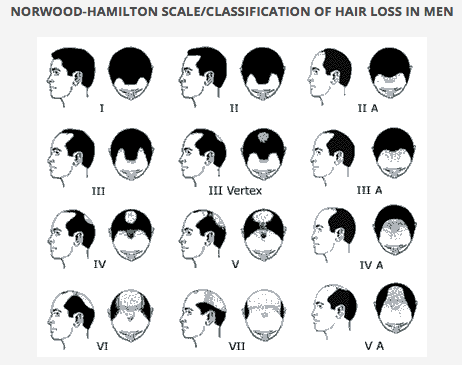Malaysia's COVID Deaths 2020 Review and Analysis
KUALA LUMPUR, Jan 11 — A total of 471 people died from Covid-19 in Malaysia in 2020, more than half of whom perished in Sabah, followed by Selangor and Johor. Eight of 10 victims were Malaysian.
The coronavirus was particularly fatal to the people of Sabah and Labuan, as they suffered 70 deaths per one million residents, seven times higher than the second-highest rate of 10 deaths per million people in Kuala Lumpur and Negeri Sembilan.
About 8 per cent of Covid-19 fatalities, or 36 victims comprising slightly more Malaysians than foreigners, were brought in dead, with the majority of them coming from Sabah.
The time from hospital admission to death averaged at nine days, about 10 days for Malaysians and only four days for foreigners, indicating that migrants entered medical facilities late (due to poor accessibility to health care) or they were more prone to severe Covid-19 disease.
Nearly seven in 10 Covid-19 victims had at least one underlying medical condition. The top five comorbidities seen among them were hypertension, diabetes, ischaemic heart disease, chronic kidney disease, and high cholesterol — a trend that holds the same for both Malaysians and foreigners.
Two in 100,000 foreigners with an underlying health condition who contract COVID-19 face death compared to one in 100,000 Malaysians.
The 2020 COVID-19 Situation
Before we move on to the death data, let us look at very briefly at the 2020 COVID-19 situation in Malaysia. When data was made available on the breakdown of the daily cases (from May 8 to October 19, 2020), on a daily average, 33.9 per cent of patients were foreigners or unregistered individuals, and 66.1 per cent were Malaysian.
From a statistical method performed, I was able to work out a possible range that the country could be dealing with for the entire year (for you statistical buffs — a 95 per cent confidence interval was done).
In the year 2020, we saw 471 deaths (case fatality rate: 0.42 per cent) from a total of 113,010 cases. From the 471 fatalities, 77 victims (16.3 per cent) were foreigners and 389 were Malaysians (82.6 per cent), while five people (1.1 per cent) were unidentifiable (the Ministry of Health’s reports did not provide details of their citizenship/ status).
This would mean that the number of foreigners that had Covid-19 in Malaysia could be anywhere from 26.7 per cent to 41.9 per cent (or 30,182 to 47,396 cases), which leaves Malaysians at 58.1 per cent to 73.3 per cent (or 65,614 to 82,828 cases). This wasn’t far off from the Ministry of Health reported daily data on January 7 this year, stating that 52.2 per cent were Malaysians and 47.8 per cent were foreigners.
Overall Covid-19 Death Scenario in 2020
The average number of days a patient was admitted before dying due was 9.17 days (this excluded those that were diagnosed after death/ brought in dead). From the 471 deaths, 313 (66.5 per cent) were men and 158 victims (33.5 per cent) were women. The overall average age of patients dying with Covid-19 was 63-years-old.
More than half of deaths were from the state of Sabah (56.3 per cent), followed by Selangor (10.6 per cent) and Johor (7.6 per cent).
Comparing Death Data Between Foreigners And Malaysians
I performed a sub-analysis of foreigners and Malaysians to see if there was a difference in their death details — and there was! Excluding those that were brought in dead or investigated after death, the average Malaysian died at the age of 64 years and the average foreigner died at 57 years of age (and when compared via an independent t-test, it was statistically significant, p<0.001).
The average number of days from admission till death for a Malaysian was 10 days, whilst for foreigners it was four days (again when compared via an independent t-test, it was statistically significant at p<0.001). It must be made known that foreigners with Covid-19 who died were likely to die at a younger age and after a shorter duration of admission compared to Malaysians.
This could be due to their late presentation to health care facilities (delayed perhaps of poor accessibility to health care, either location or financial reasons) or that they were more prone to severe tiers of Covid-19.
Interestingly, Selangor on average recorded a death after treating a Covid-19 patient for more than 17 days, whereas the average for the rest of the country (minus Selangor) was eight days.
Performing a brief comparison of the communities, the possible 38,000-odd infected foreigners accounted for 1.3 per cent of registered foreigners in the country and the near 75,000 Malaysians infected accounted for 0.25 per cent of the Malaysian population. This excluded:
- Unregistered migrants
- Asymptomatic patients, undiagnosed and untested
Though the number appears small, the asymptomatic factor is extremely worrying (might be a Godzilla of a number if mass testing was done), thus being vigilant is still a very big must!
Brought-In-Dead Cases
From the 36 brought-in-dead cases, 47.2 per cent were foreigners and 52.8 per cent were Malaysians. A majority (82.4 per cent) of brought-in-dead foreigners were from Sabah.
Comorbidities That Covid-19 Patients Died With
A total of 326 of those who died from coronavirus (69.2 per cent) had at least one comorbidity. Amongst those with comorbidities, 12.6 per cent were foreigners and 86.2 per cent were Malaysians (the rest 1.2 per cent were unclassified).
Overall, the most common comorbidity seen was hypertension (52 per cent), diabetes mellitus (38 per cent), ischaemic heart disease/ heart disease (16 per cent), chronic kidney disease (14 per cent) and dyslipidaemia (12 per cent).
Though comorbidity might have multiple co-existence in individuals (ie: a person might have hypertension and diabetes), they were accounted for separately. From this analysis, the highest comorbidity seen among foreigners was hypertension (26 per cent of foreigners who died of Covid-19 had hypertension) and similarly, 57 per cent of Malaysians who died of Covid-19 had hypertension.
In short, the comorbidity trends were very similar in Malaysians and foreigners — 0.11 per cent of infected foreigners who came in with a comorbidity died of Covid-19 (case fatality rate of foreigners) and 0.38 per cent of infected Malaysians with a comorbidity suffered the same (case fatality rate of Malaysians).
Although foreigners comprised only 12.6 per cent of Covid-19 victims with comorbidities, it must be pointed out that from a country with 2.96 million registered foreign workers, it is a two in 100,000 probability that a foreigner with a comorbidity will die of Covid-19 and one in 100,000 for a Malaysian to undergo the same (note: there may be many undocumented migrant workers which were not accounted for).
Conclusion
From the total of 471 Covid-19 related deaths seen in Malaysia for the year 2020, more than half the deaths in this country come from Sabah. Foreigners were likely to die at a younger age and after a shorter duration of admission into hospitals.
The comorbidity among those who died was similar among foreigners and Malaysians, with the highest numbers having hypertension. Proportionally to the general population, two in 100,000 foreigners diagnosed with Covid-19 were likely to die, twice as high as one in 100,000 Malaysians.
Implication To Malaysia’s Covid-19 Control

Utilising this death data for vaccination purposes, the vaccination programme for the country must first focus on those who are at risk of dying from Covid-19 — this will reduce those that are likely to be admitted longer (morbidity) and suffer mortality.
We cannot exclude the fact that those from Sabah, Selangor and Johor (in descending order) will need to undergo vaccinations urgently as they arrive.
We mustn’t forget foreigners in the plight of things as we can see that nearly 50 per cent of people brought in dead are foreigners, especially from Sabah.
The comorbidity of hypertension, followed by diabetes, ischemic heart disease, chronic kidney disease, and dyslipidaemia are among the common comorbidities among the dead, both for foreigners and Malaysians. Thus, if selection has to be done for vaccine provisions first — those with hypertension should be given priority and in descending order as in the list.
Where And How Do We Move Forward?
We will need better cooperation from the government to be more open about data. Having cumulative data will not help with data analysis. Even for this analysis, it was made possible with the details of daily Covid-19 deaths that were described.
But with limited data being shared, the comparison of death data with infected people discharged alive was not possible. It would have been fantastic to compare matching data to see the likelihood of patients with certain (individual or combined comorbidities) on their risks of death compared to healthy individuals.
A regression analysis comparing the risk of deaths among those with the comorbidities mentioned above must be done to have more concrete results (one which I did not do due to insufficient granular data made available for public use).
Data is needed badly so that analysis on vulnerable populations, high-risk populations and stratifying those who need to receive vaccines first can be statistically modelled to help the nation combat COVID-19.













Comments
Post a Comment